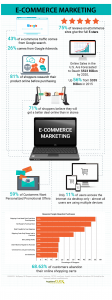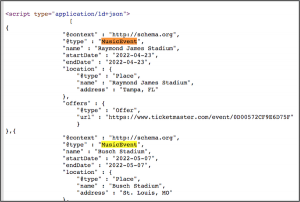Bob Apollo wrote an outstanding post, Where Did That Close Date Come From? He talks about the importance good close dates to forecast integrity.
I thought I’d expand on his outstanding thoughts.
Nothing destroys pipeline and forecast accuracy more than bad target close dates. I’ve lost count of the number of pipeline reviews where the target close dates were pure wishful thinking.
I recall one review about a year ago, where the sales person had slipped the target close date by 30 days 11 times in the past 11 months. When I reviewed his pipeline, I challenged him about the opportunity, “What makes you think it will close next month, you’ve missed it 11 times already?”
He naturally, had no idea. He was the type of sales person whose only “value” was asking the customer every month, “Are you ready to order?” Every month the answer was the same and every month deals slipped.
Another had a huge deal he’d been working on of years. He hadn’t been in contact with the customer for some time, but he insisted the deal would close by the end of the quarter. Somehow, none of his responses to my questions felt right, I asked him to call the customer for an update. He came back to the meeting, head down-eyes averted. His key customer had left the company 9 months before. The deal was long dead, but he hadn’t been doing his job and had to start this “forecast” deal from the very beginning–re qualifying, working with new people at the customer.
As a side note, shame on their managers for letting these things persist in the organization. The pipeline quality and sales performance is as much their responsibility as it is the sales person’s.
I’m a bit hard nosed about Target Close Dates. I don’t want to see them set until the customer has locked in, in their own minds, on a “Go Live” date. I don’t view an opportunity as qualified until the customer has made that commitment.
Once we have that date and the Target Close Date, I like to treat it as immovable. I do everything I can to keep that date from changing.
We can learn a lot from great project managers and project management principles, applying them to the customer buying and our selling process.
Great project manager do everything they can to keep their project end dates sacred–immovable. Inevitably, they build in a little buffer to the target, but once they’ve set the target date they do everything they can to keep it.
Naturally, in any project challenges happen. Things get behind schedule, unanticipated events occur. Project manager revise their project plans, working backwards from the target completion date, trying to adjust all the activities to fit the plan.
Sales people should be applying the same discipline to their deal strategies. As things slip, perhaps the customer is moving slowly, perhaps new things have popped up, we need to be adjusting our plans to try to achieve the Target Close Date.
Working backwards from that date, we can identify the critical activities we and the customer must complete to maintain that Target Close Date.
By now, you probably are thinking, “Dave, this doesn’t work in the real world. We can’t force the customer to order by a certain date!”
Some of you might, also, be thinking all my writing about customer focus is sheer hypocrisy with treating the Target Close Date as sacred and “forcing” the customer to adjust what they are doing so we can close as forecast.
Here’s the difference. Working with the customer to establish the “Go Live” date means you have, at least at a preliminary level, established a shared expectation of when they want to start producing results.
The Target Close Date has to be established, collaboratively, with the customer. It has to be tied to their desire to start producing results or to a critical activity for them.
For example, if they are launching a new product, they have an expected revenue stream that product will produce. If they slip anything in that product launch, that revenue stream is jeopardized.
If they are adding manufacturing capability, there’s a date when they have to be in production and shipping products. Missing that date has consequences to the customer.
They may have to satisfy some compliance issues. Missing that date can have serious consequences to them.
If we work with the customer, in qualifying, to establish a preliminary view of when they want to start seeing results produced, and the magnitude of those results, it becomes far easier for both the customer and us to maintain those target close dates. The customer has an investment in meeting that date–not because we want an order, but because they are seeking to start achieving their goals by a certain date. Every slip in the target close date adversely impacts their ability to achieve goals.
This process changes how we engage the customer. We aren’t pushing for an order, we are helping them produce results by a certain date. As things change in the buying/selling process, we can work collaboratively to achieving this shared goal. As things slip in they buying process, we can work with them to see how we adjust the plans to achieve their Target Close Date.
Of course, this doesn’t always work. There are some things that arise that force the customer and us to slip the date. But it’s only after we have exhausted all the other alternatives. Most importantly, we are doing this in lockstep with the customer, focusing on their goals, not our need for an order.
Business & Finance Articles on Business 2 Community(69)
Report Post






